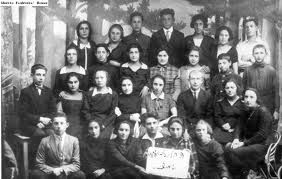Ghetto Fighter’s Museum
June 20th 2014
Jerusalem’s Yad VaShem is the official world center for Holocaust research, but the Western Galilee’s Ghetto Fighters’ House Museum (Beit Lohamei Haghetaot) provides visitors with an in-depth exploration of the heroic Jewish resistance to the Final Solution. In this sense, the Ghetto Fighters’ House Museum enables a new type of connection to the Holocaust story by focusing on the testimony of fighters.
The museum was established in 1949, four years before Yad VaShem, by survivors of the Holocaust who were themselves members of the Jewish underground in Polish ghettos and veterans of partisan units. The museum specializes in telling the story of Jewish resistance during World War II, from the armed uprisings of Jews in both the ghettos and the concentration camps, to the Jewish soldiers who fought in the armies of the Allied forces. “We thought that the Holocaust and Jewish resistance should be studied, that lessons could be learned from both,” Yitzhak Zuckerman, one of the sole Warsaw Ghetto uprising fighters to survive, famously said of the museum’s founding. “So we established this house that would tell the younger generations and those who would come after us, what happened and how it happened, and how we must continue to live.”
Located in the Western Galilee off of Route 4 between Akko and Nahariya, the museum features 14 exhibitions, ranging from the “Home of Testimony” exhibit, which offers personal testimonies from the founders of the Ghetto Fighters’ Kibbutz (Lohamei Haghetaot), to the actual wood and glass booth in which Adolph Eichmann sat as he faced his accusers during his trial in Jerusalem. The heart of the museum is the exhibit devoted to the Warsaw Ghetto Uprising. Here, the story of armed resistance is relayed through the personal testimonies of Zuckerman and Zivia Lubetkin.
The Yad LaYeled Children’s Museum features exhibits and theatrical performances whose themes are appropriate for younger museum-goers. For example, the “Notes of Life” exhibit portrays five young violinists whose musical skills and love for the violin characterized European Jewish life in the decades before the outbreak of war. In that era, violin music was closely associated with both the most festive and the most agonizing of times. The main permanent exhibit in Yad LaYeled is “The Jewish Child during the Holocaust,”which is based on first-hand accounts of children who lived during the darkest days. The audio testimonies are narrated by children.
Between the main exhibits and the Yad LaYeled Children’s Museum, you can expect to spend several hours at the Ghetto Fighters’ House Museum, learning more about the lives of ordinary Jews during the Holocaust and how they came to exhibit the great courage of resistance.












